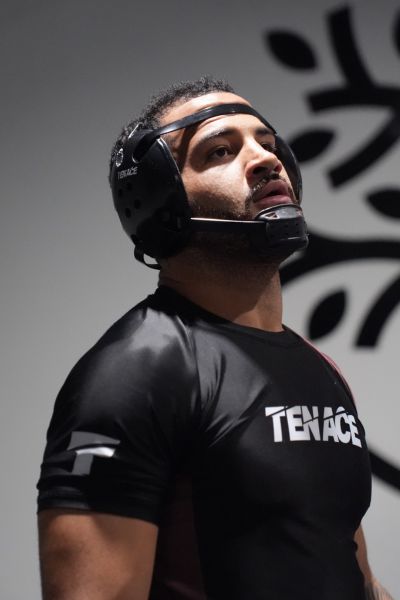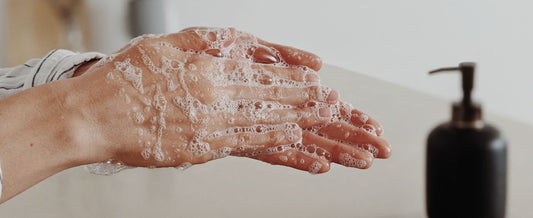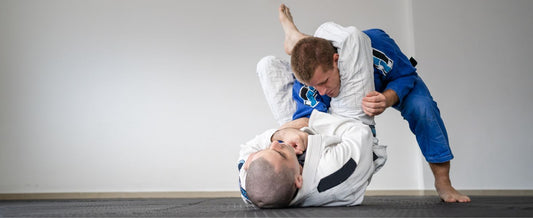How to protect your joints in BJJ or Grappling without losing mobility?

- 5 Techniques to Start Jiu-Jitsu – Tenace
- Why You Need to Wear Elbow Pads in BJJ and Grappling – Tenace
- The Best Knee Brace for BJJ, MMA, and Grappling in 2025: Comfort, Protection – Tenace
Creaky knees, aching elbows, stiff neck… does this sound familiar?
When you train in BJJ, grappling, or any contact martial art, you know that sooner or later your joints start to complain. And no, it's not just a problem for veterans; more and more young practitioners are experiencing constant discomfort, or even preventable injuries.
The good news is that you can protect your joints without becoming a "soft fighter" or having to slow down your training. Taking care of them is part of your evolution.
This blog is for you if:
- You train several times a week and you're already starting to feel some discomfort.
- You've had an injury and you don't want to repeat it.
- You are interested in performing better… but intelligently.
- You want your body to last many more years on the tatami.
Index
- Why your joints suffer so much in BJJ and Grappling
- The most affected areas and their most common injuries
- How to take care of your joints without losing mobility or explosiveness
- Key exercises to protect knees, elbows and neck
- When and how to use specific protections
- Can you prevent it without stopping training hard?
- Conclusion: Taking care of your joints is part of being a good fighter.
1. Why your joints suffer so much in BJJ and Grappling
Jiu Jitsu and grappling are disciplines that, while seemingly gentle compared to impact sports, constantly put a strain on the joints . Why?
Because there aren't just hits. There are levers, pressure, friction, falls, forced rotations, and constant resistance.
Plus, we often train on hard surfaces or with heavier partners, and our bodies compensate as best they can . And if you don't take care of yourself, these compensations lead to chronic injuries.
Factors that make it worse:
- Poor or no warm-up
- Poor technique (especially in escapes)
- Excessive load without rest
- Do not use protection when there is already discomfort
- Lack of mobility in certain areas
2. The most affected areas and their most common injuries
Let's see which parts of the body suffer the most and how.
Knees
They are the biggest victims of grappling. Constant support, open guards, leg entrances, poorly executed takedowns... The common problems are ligament pain from sudden twists, meniscus inflammation or unstable knees, and kneecap discomfort from poor technique or direct impact.
Elbows
Leverage submissions, repeated use of the arm for support or pushing, and continuous pressure in tough sparring situations all destroy it. The most common problems here are hyperextension, especially in armlocks, tendonitis, and joint pain from repetitive use.
Neck
An area that's rarely trained and suffers a lot. Guillotines, turtle defenses, pressure in mount... and the neck pays the price. Possible problems: neck stiffness, pain when turning, or aerials due to pinching.
3. How to take care of your joints without losing mobility or explosiveness
Caring isn't limiting yourself. It's better preparing yourself.
Many people believe that protecting yourself means training more gently. False. It means training with preparation.
What really keeps joints healthy is:
- Have good active mobility (range + control)
- Warm up critical areas well
- Correct technical errors
- Protect yourself when you already notice signs (pain, pressure, overload)
This not only makes you more resilient, but also improves your reaction time, angles, and body control.
4. Key exercises to protect knees, elbows and neck
Here's a mini activation and reinforcement routine you can do during your warm-up or after your workout:
Knees
- Slow deep squats with straight arms (10 reps)
- Mini elastic band lateral walk (10 steps each side)
- Glute bridge with feet elevated (10 reps)
- Dynamic hamstring stretch (leg swing, 10 each)
Elbows
- Controlled push-ups on fists (8-10 reps)
- Large shoulder circles with light weight (1-2 kg)
- Elbow extensions with elastic band (15 reps per arm)
- 90-degree isometric (hold for 20 seconds)
Neck
- “Yes/no/maybe” exercises with gentle resistance (towel or band)
- Isometry against the hand in different directions (5-10 seconds)
- Neck bridge over shoulders (not over head) with control
- Self-massage or myofascial release with a ball
If you're already experiencing discomfort, these exercises should be done gently and painlessly. If it hurts, consult a physical therapist.
5. When and how to use specific protections
Don't wait until you get injured to protect your joints. Many top wrestlers use them as a preventative measure. And it allows them to continue training without slowing down their progress.
Knee pads
Ideal if you've already had discomfort or simply want to take care of your supports.
✅ Good knee pads don't just protect: they provide stability without blocking you .
👉 Knee pads with stabilizers – see at Tenace
Elbow pads
Very useful if you do a lot of no-gi or feel repeated pressure on the ground.
✅ They absorb impact and reduce friction with the mat or with your partner's turns.
👉 Technical elbow pads – see at Tenace
Earmuffs
Ear damage is real… and almost always preventable.
✅ Earmuffs prevent repetitive trauma caused by cauliflower. Comfortable, adjustable, and secure.
👉 Anti-cauliflower earmuffs – see at Tenace
6. Can you prevent it without stopping training hard?
Absolutely. The key isn't to slow down. It's to adapt.
The fighters who progress the most aren't those who train until they're broken, but those who learn to listen to their bodies, improve their technique, and make physical care part of their training.
You can roll hard wearing knee pads.
You can do explosive drills with elbow pads.
You can train daily without accumulating overload if you do mobility.
It's not a choice between performance or prevention. It's doing it right… to last longer.
-
Jiu-jitsu and grappling are contact sports. They're not gentle. But you can make them safer if you train mindfully.
Taking care of your joints isn't optional. It's an investment so you can:
- Train more times per week
- Avoid unnecessary injuries
- Feel more confident and in control
- Compete for many more years
Make joint care a natural part of your journey.
Your performance will show. And so will your future.
🎁 Bonus:
At Tenace, we create equipment specifically for serious practitioners who want to keep improving without breaking the bank.
💥 Reinforced knee pads
💥 Ergonomic elbow pads
💥 Comfortable and durable earmuffs
🟢 Use code T-10 and receive a 10% discount on your next order.
Because taking care of your body is also part of training.
👉 Visit tenacesports.com




